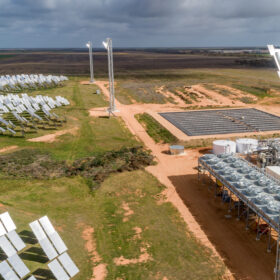In a final determination published Thursday, the Australian Energy Market Commission (AEMC) has published a final rule on the minimum ‘access standards’ that specify how much reactive current capability inverter-based technologies are required to provide.
The new final rule will see the minimum amount of reactive current capability that resources such as renewable generators and batteries will need to provide at all times within the power system set at “greater than 0% of a generator’s maximum continuous current per 1% change” in voltage in the system.
The new setting is a reduction from the prevailing standard of “2% of a generating system’s maximum continuous current per 1% change in voltage” and represents an increase based on industry feedback to the draft rule published in December 2022, which proposed a “zero response or response below zero.”
‘Reactive current access standards’ are among a number of performance standards that inverter-based generators and battery technology providers must comply with when they connect to the national electricity market (NEM).
The standards help to ensure the connecting plant operates in a predictable way that benefits security and stability, especially following a fault event, such as when a tree falls on power lines.
While adequate provision of reactive power is essential for a stable and secure power system, the current rules have led to parties, particularly new wind farm operators, bearing unnecessary costs of the auxiliary dynamic reactive current control equipment that are unlikely to provide significant system security benefit.
The costs for investing in this equipment, would have previously heightened the expense of investing in these projects, and of generating energy with costs being passed on to consumers through wholesale prices.
Wind, solar and battery technology providers are now able to negotiate, working with network service providers (NSPs), on whether and where additional investment in voltage support equipment is relevant, for their project.
The final rule is also expected to lead to more efficient delivery of voltage support equipment with NSPs able to take into account a broader range of factors in determining where to site and size equipment that supports voltages and provides a range of complementary services, creating savings in running such equipment, which would have been passed on to customers.
Changes were made between the draft and final rules to make it easier for generators to suitably respond to local faults and electrical conditions.
The final rule also includes a number of further requirements that will help to reduce costs and improve stability in the system, including the addition of a commencement time standard to incentivise a fast response from generators.
The new rule will commence from 27 April 2023.






By submitting this form you agree to pv magazine using your data for the purposes of publishing your comment.
Your personal data will only be disclosed or otherwise transmitted to third parties for the purposes of spam filtering or if this is necessary for technical maintenance of the website. Any other transfer to third parties will not take place unless this is justified on the basis of applicable data protection regulations or if pv magazine is legally obliged to do so.
You may revoke this consent at any time with effect for the future, in which case your personal data will be deleted immediately. Otherwise, your data will be deleted if pv magazine has processed your request or the purpose of data storage is fulfilled.
Further information on data privacy can be found in our Data Protection Policy.